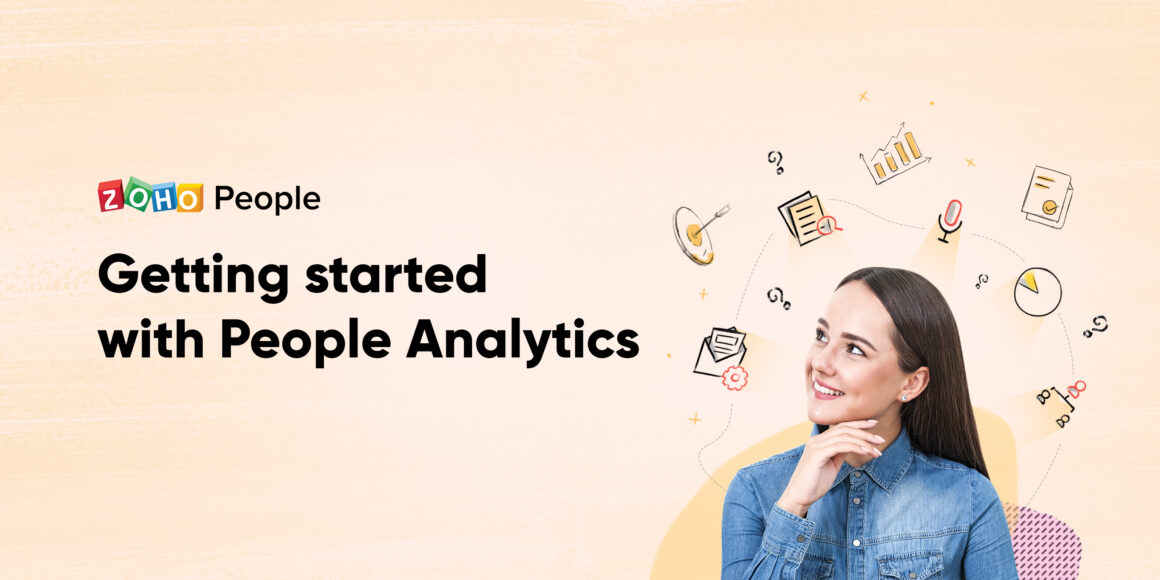- HOME
- HR insights
- 5 steps to get started with people analytics
5 steps to get started with people analytics
- Last Updated : April 30, 2024
- 6.4K Views
- 4 Min Read

HR professionals all over the world are beginning to understand the importance of people analytics for managing HR operations. Many organizations have started investing in applications that use people data to assist with talent acquisition and management, performance management, employee retention, and strategic workforce planning. With people analytics, you can get insights that help you make better decisions and enhance business performance and employee experience. People analytics can result in substantial profit for your organization when used efficiently.
But, what is people analytics? How can it benefit your organization? How can you use it effectively to obtain the desired results? Read this blog to get all your questions about people analytics answered.
What is people analytics?
People analytics, also known as HR analytics, is a process that HR teams often use to understand, track, streamline, and optimize various aspects of their employee management strategies, including employee experience, employee addition, employee attrition, employee engagement, and more by analyzing employee data. HR professionals proficient in people analytics usually gather and evaluate an employee's hiring, attendance, leave, performance, learning, compensation, and exit data to gather actionable insights that help them make informed decisions.
Benefits of people analytics
As different data is brought together, you can gather valuable insights and make more meaningful decisions. There is less room for errors or bias as actions are taken based on data, not gut feelings or assumptions. A data-driven approach also allows your organization to provide excellent employee experiences, reducing employee turnover. For example, when data is used to design employee training opportunities, the individual needs of employees can be better understood, resulting in more targeted and satisfying experiences. Furthermore, using people analytics in the recruitment process reduces time-to-hire and increases hiring quality. For example, the qualities of top performing employees in an organization can be determined using people analytics, and these qualities can be used as criteria to evaluate interview candidates.
Read more about the benefits of using people analytics.
It’s clear that using people analytics enhances the productivity of an organization and creates a positive employee experience.
How do you use people analytics efficiently to get these results?
1. Build a people analytics team
It’s essential to have a people analytics team that can identify and solve business issues. The analytics team should be proficient in work psychology, data science, communication, data mining, machine learning, and HR. The team should be made responsible for defining and tracking Key Performance Indicators (KPIs) such as absenteeism rate, cost per hire, training effectiveness, revenue per employee, attrition rate, employee satisfaction index, and many more.
2. Understand your specific data needs
Before using people analytics for your organization, understand why your organization needs this data. Evaluate different areas of your organization and assess the pain points that are affecting it. This will help you gain focus. Analyze whether the desired insights have the potential to improve your organization’s performance. For example, if your organization has a high employee turnover rate, you can use cluster analysis to measure employee job and salary satisfaction, promotional and training opportunities, and duration of employment to identify the factors that cause employee turnover. With this, you can design specific employee-centric programs to improve retention by tackling your organization’s weak points.
3. Develop a standardized data collection procedure
Data collection is an important aspect of people analytics. Even a small error in the data can lead to inconsistent information. As an HR manager, you will have a lot of data to manage. It’s important to collect data in a standardized manner and centralize it in a single location. It’s also essential to ensure that the data is collected ethically and that employees are informed about the goal of collecting this data. Otherwise, improper communication will lead to distrust among your teams. It’s also important to ensure that third-party applications used for data collection comply with the necessary security and ethical standards.
4. Create a data cleaning procedure
Collected data may be incorrect or redundant when gathered from different sources. Develop a data cleaning procedure to save time and ensure the data is accurate. In data cleaning, the missing values and outliers are identified, duplicate data is deleted, and missing data is added. During the cleaning process, check if the data represents the information that has to be measured and ensure that the data is up to date. Manually cleaning data can become an enormous task if numerous data sets are involved. During such situations, online data cleaning tools can be used to ensure data accuracy.
5. Interpret the data effectively
Once the relevant data is obtained, models and algorithms can be used to gain insights in the form of reports, graphs, and visuals. It’s important to identify and understand what the insights indicate to take actions that amend existing procedural flaws. Statistical measurements like factor, regression, classification, cluster, or association analysis can be used to interpret the data. HRMS software with analytics features can help make this process easier. After you have the results, discuss them with stakeholders and create an action plan to amend the procedure. Ensure that the change is consistent with your organziation goals, and analyze the impact the change will have on each area of your business. Once solutions are in place, it’s necessary to check if the desired results have been obtained. Employee feedback is vital for this. Conduct regular checks to ensure that the changes remain consistent and new errors or risks don’t crop up. This will also help you identify if additional amendments are required.
With people analytics, informed decisions are made based on data rather than assumptions. With better decisions, you can enhance your company and employee performance. When used effectively, people analytics can truly take your business to the next level. Zoho People’s people analytics feature provides detailed insights about your workforce by analyzing meaningful data. This helps your organization to make decisions that will improve employee engagement and satisfaction. Learn more about Zoho People’s people analytics feature.
Also read:4 HR processes you can improve using People Analytics
 Tarika
TarikaContent Specialist at Zoho People


